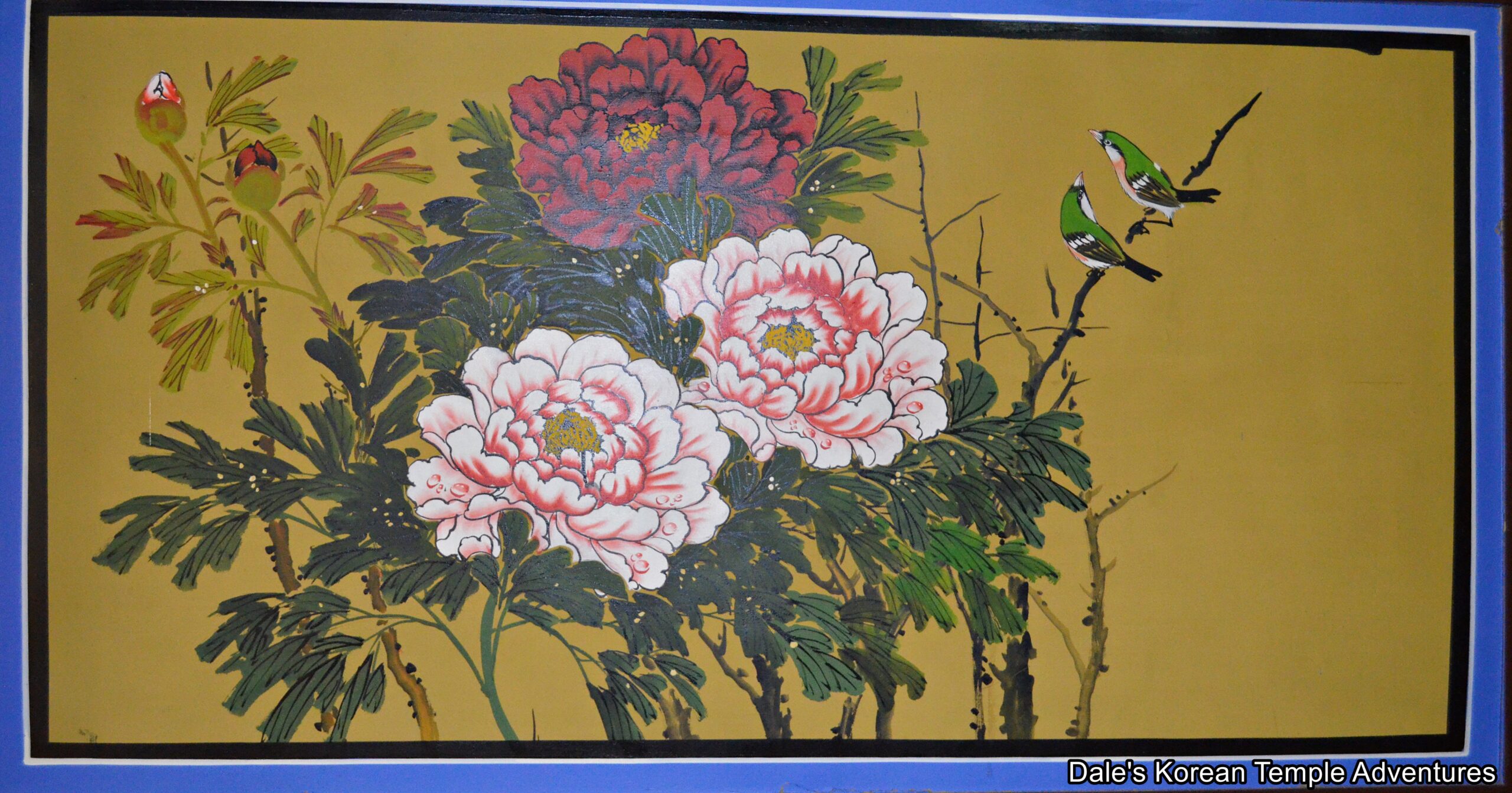
Introduction
Next to the lotus flower, arguably the second most popular flower you’ll find at a Korean Buddhist temple is the peony, which is known as “moran – 모란” in Korean. The peony represents loyalty, prosperity, beauty, good fortune, and wealth. Additionally, while the lotus flower is symbolic of spiritual growth within Buddhism, the peony is associated with religious nobility and dignity.
In addition to peonies appearing alone at Korean Buddhist temples, they can also be joined by other flowers like the rose. If a peony and a rose appear together in a Buddhist painting, this is meant to symbolize wealth, honour, and a long spring. However, if a peony appears alongside a stone or a peach, this combination is meant to symbolize a wish for a long spring.
As for their appearance, they are typically painted from the side or above. This is meant to display a sense of abundance and fullness. This is emphasized through their overflowing petals.
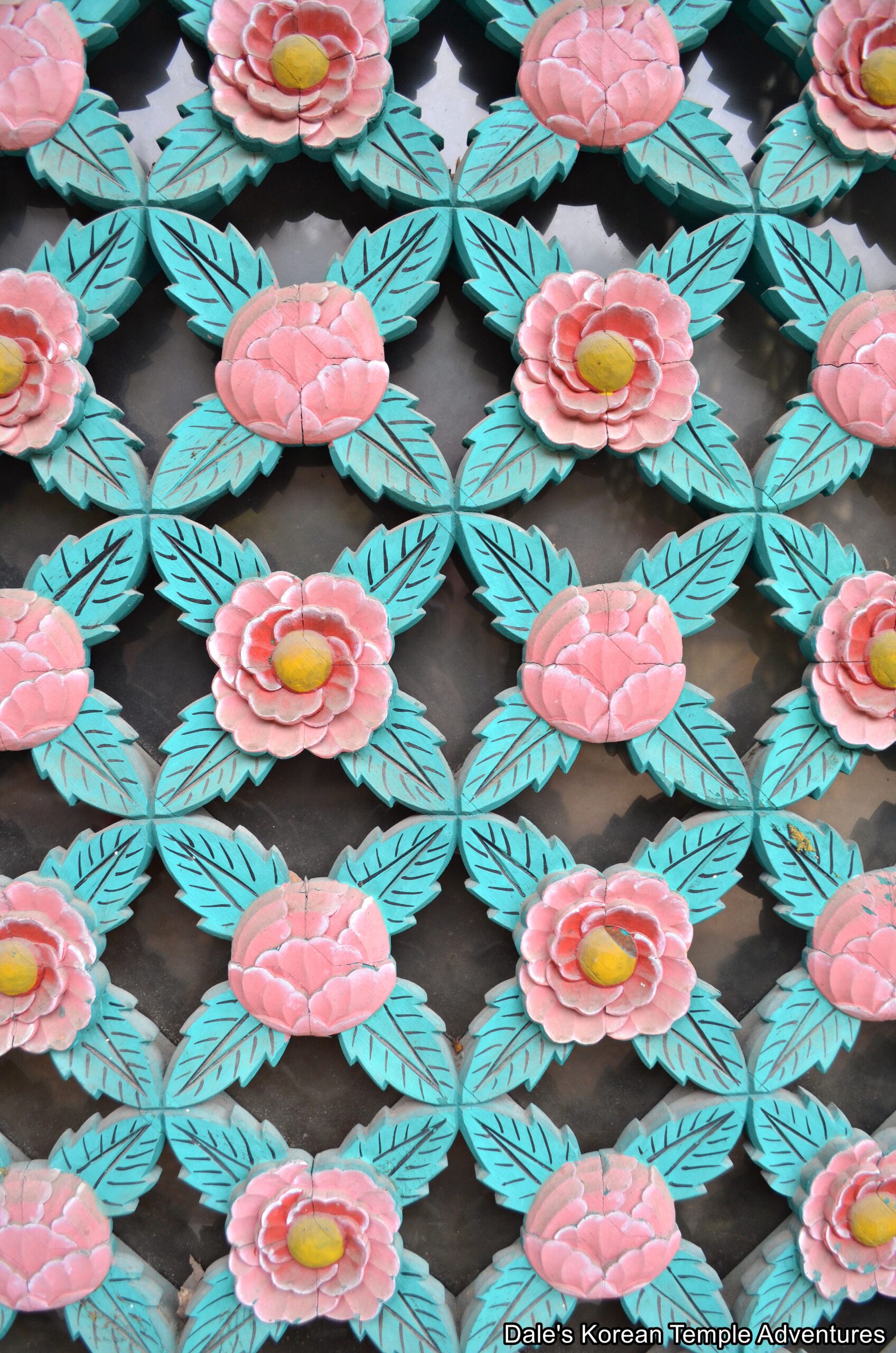
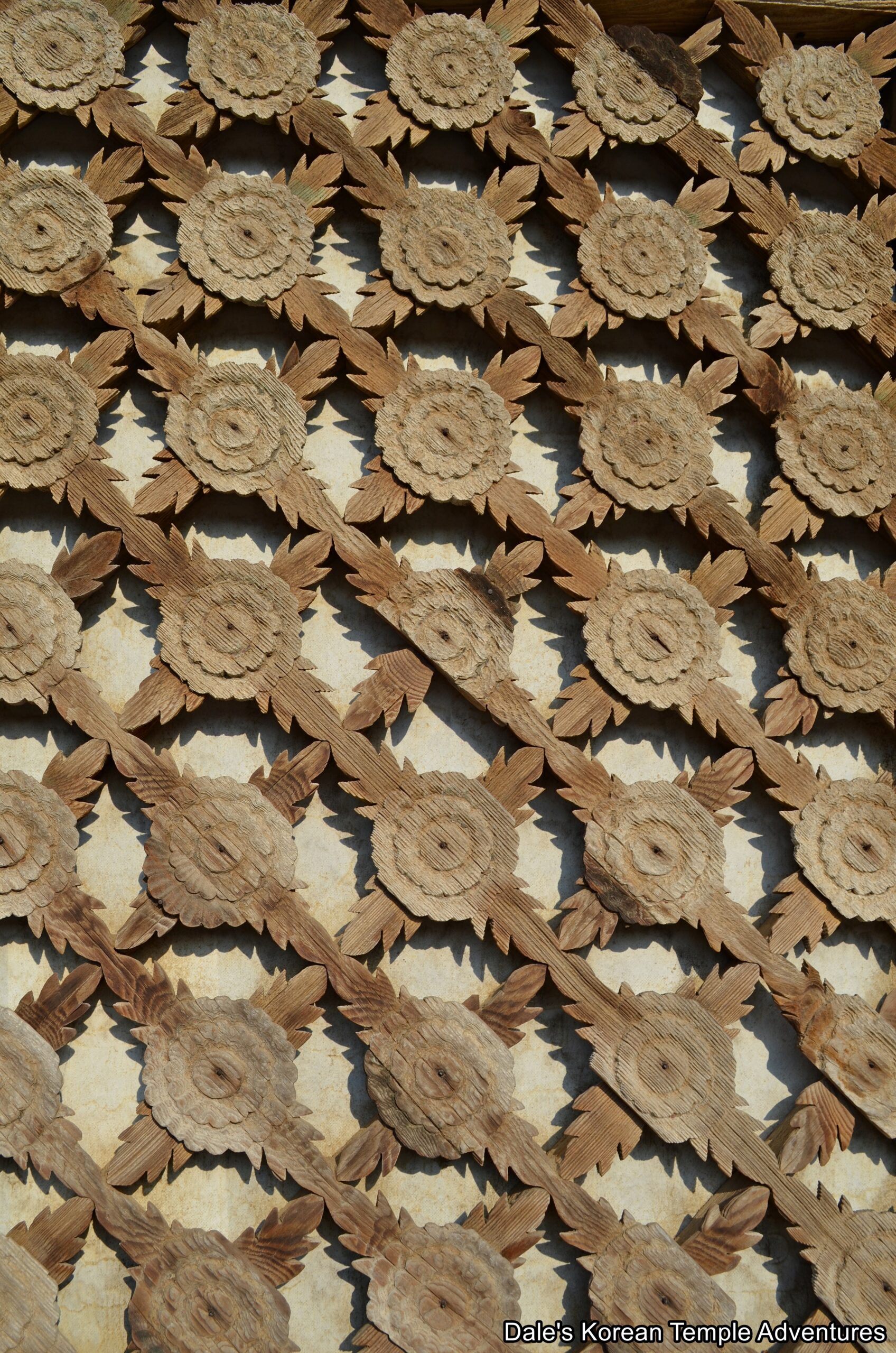
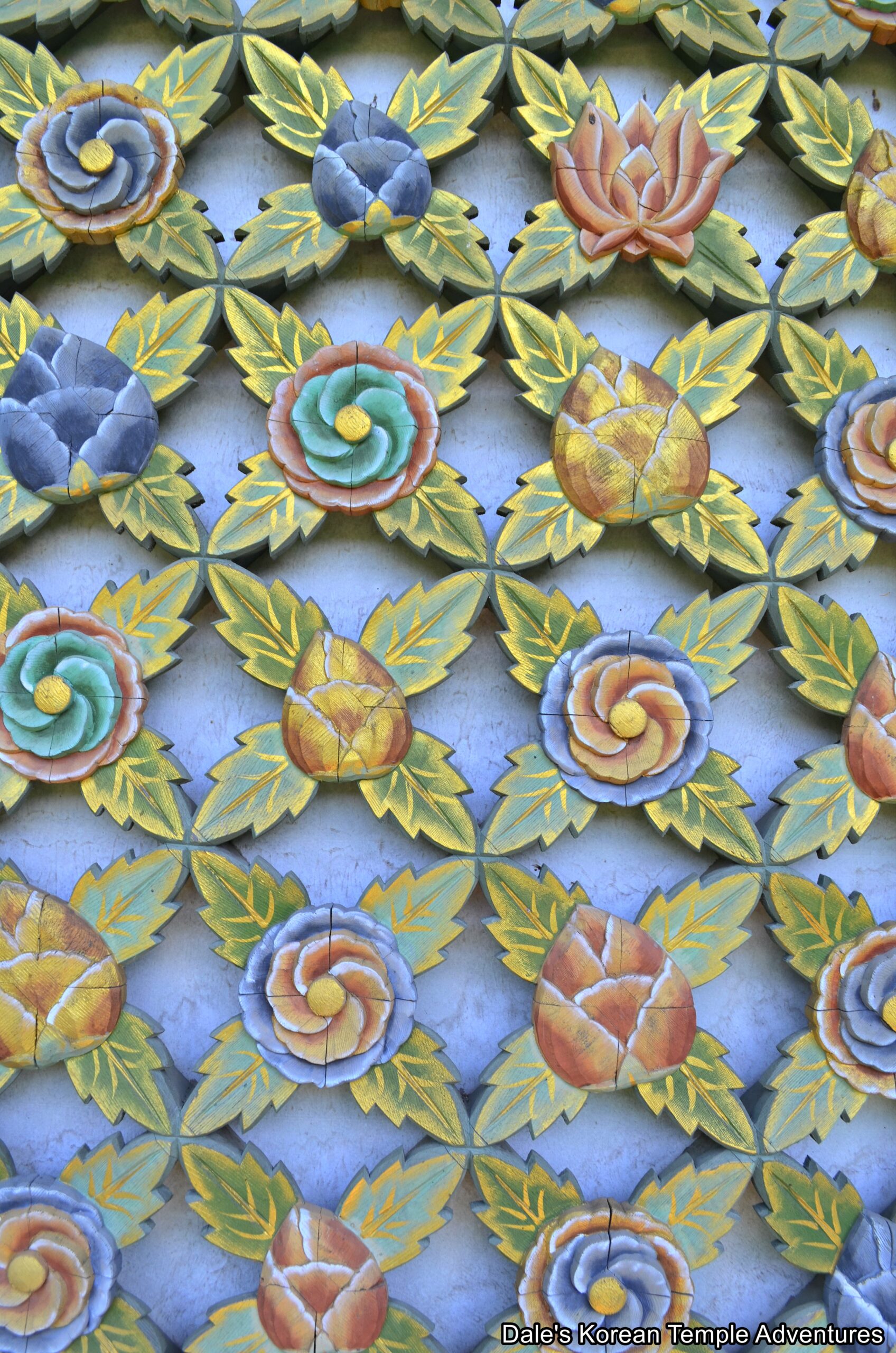
The Ggotsalmun – Floral Latticework Doors
As for where you’re most likely to find peonies at a Korean Buddhist temple, the most obvious is the floral latticework, known as “Ggotsalmun – 꽃살문” in Korean, adorning the front of temple shrine halls in Korea. This style of latticework is known as the “Upright Diagonal Floral Grid” in English. This style of latticework is a mixture of floral and geometric designs. There are three potential styles of latticework that adorn the exterior of a temple shrine hall, but this is the most popular kind. Typically, you’ll find lotus flowers, peonies, sunflowers, and chrysanthemums comprising the flowers that might appear in these lattices. These flowers can appear in a variety of ways including the abstract. Typically, these flowers are wood and are painted in vibrant colors. They usually have four or six petals with six being the most common design. And the reason for these floral designs, including peonies, adorning the front of temple shrine halls is that they are meant to pay respect and reverence to the Buddhas and Bodhisattvas housed inside the perspective shrine halls.
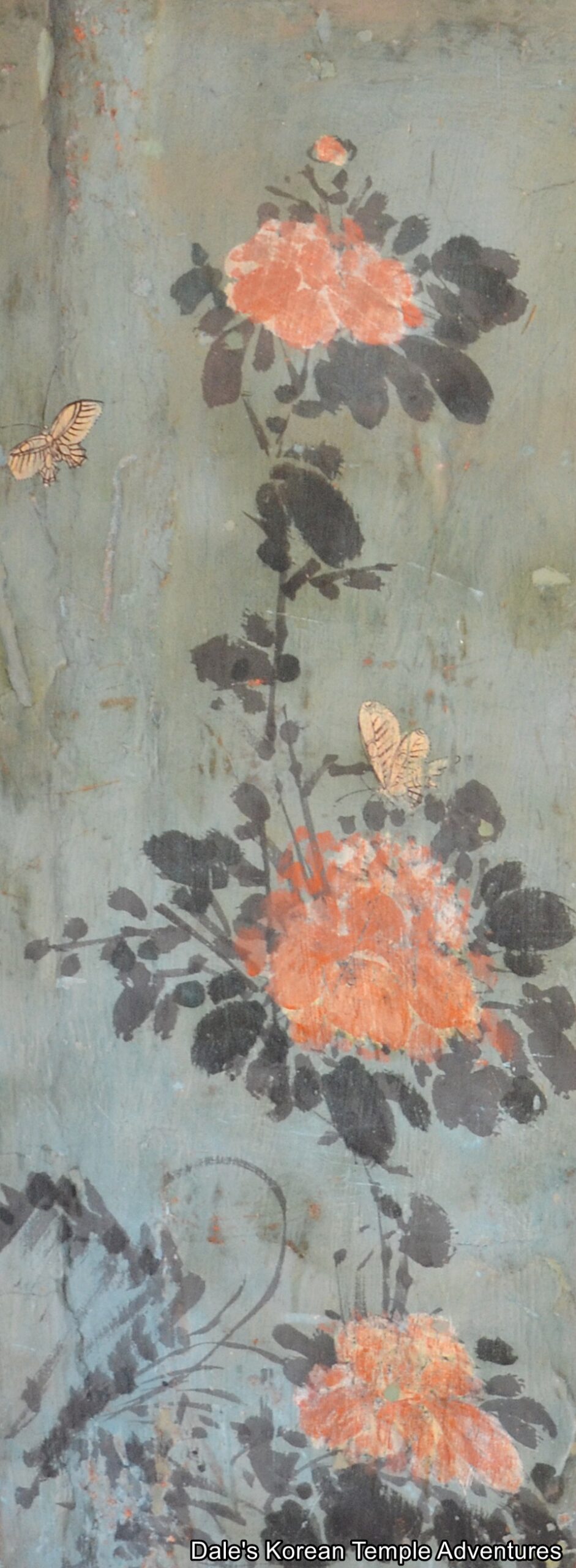
Queen Seondeok of Silla and Peonies
As to the historical context of the peony in Korean society, and Buddhism in particular, there are a couple of interesting tales.
During the Tang Dynasty (618 to 907 A.D.), peonies were held in high regard. In fact, they were held in higher regard than lotus flowers, especially with the general public. The reason that peonies were so popular during the Tang Dynasty is that they were associated with prosperity and good luck. That’s why they earned the nickname at this time as the “king of flowers.”
This interpretation of the symbolism behind the peony was similar in Korea to that found in China. In fact, in the “Samguk Yusa,” or “Memorabilia of the Three Kingdoms” in English, there’s a story about the peony and Queen Seondeok of Silla (r. 632-647 A.D.). This is that story:
“The twenty-seventh sovereign of Sill was Queen Deokman (posthumous title Seondeok, 632-647 A.D.). She was the daughter of King Jinpyheong (579–632 A.D.) and ascended the throne in the sixth year (Imjin) of Emperor Taizong of Tang. During her reign, she made three remarkable prophecies.
“First, the Emperor Taizong of Tang (r. 626-649 A.D.) sent her a gift of three handfuls of peony seeds with a picture of the flowers in red, white, and purple. The Queen looked at the picture for awhile and said, ‘The flowers will have no fragrance.’ The peonies were planted in the palace garden, and sure enough they had no odour from the time they bloomed until they faded…
“During her lifetime the courtiers asked the Queen how she had been able to make these prophecies. She replied: ‘In the picture there were flowers but no butterflies, an indication that peonies have no smell. The Tang Emperor teased me about having no husband.”
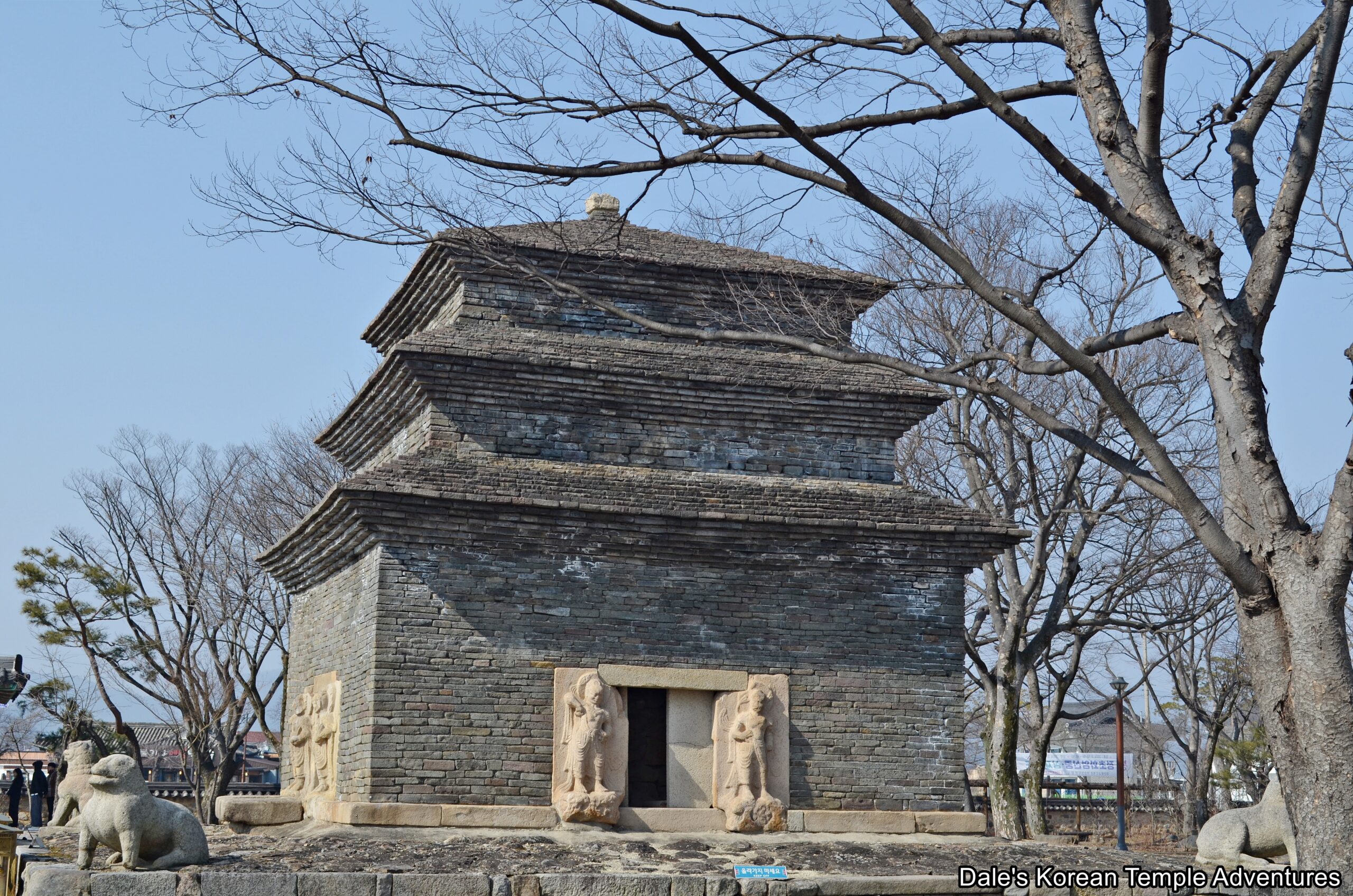
What is noteworthy about this story is how Queen Seondeok of Silla felt slighted by the absence of butterflies in the painting. The absence of butterflies was thought to symbolize the queen and the beautiful, yet scentless, flower. As a response, or at least according to a legend, it’s believed that Queen Seondeok of Silla founded Bunhwangsa Temple, which means “Fragrance of the Emperor Temple” in English. And Bunhwangsa Temple is home to the “Stone Brick Pagoda of Bunhwangsa Temple.” During a renovation on the pagoda, a stone reliquary was discovered inside the pagoda. And found inside this reliquary were pieces of green glass, beads, scissors, and gold and silver needles. It’s believed by some that Queen Seondeok of Silla placed these feminine items inside the brick pagoda as a response to Emperor Taizong of Tang and his peony painting.
However, it should be noted that there is some debate about the emperor’s intentions behind omitting butterflies in the peony painting. Some have argued that the absence of the butterflies was caused by the similarity found in the sound of the Chinese character for “butterflies” and the Chinese character referring to elderly people in their seventies and eighties. If this premise holds true, the presence of butterflies in the peony painting would suggest a wish for the recipient’s prosperity only after reaching their seventies and/or eighties. Nonetheless, it seems improbable that the people of Silla, including the monk Ilyeon (1206 – 1289), who wrote the “Samguk Yusa” much later during the Goryeo Dynasty (918-1392), were ignorant of such a symbolic tradition. As a result, Queen Seondeok of Silla’s interpretation of the absence of butterflies in the peony painting seems reasonable.
Queen Seondeok of Silla would be instrumental in the founding of several other prominent temples in Korea including the completion of Hwangnyongsa Temple, Sangwonsa Temple, Tongdosa Temple, Woljeongsa Temple, and Magoksa Temple. Perhaps this slight inspired her to create some of Korea’s most famous temples.
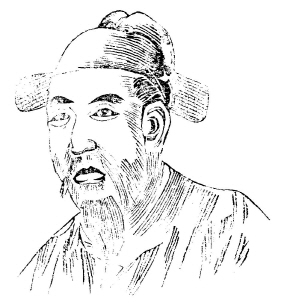
Seol Chong and “The Warnings of the Flower King”
Additionally, Seol Chong (650-730 A.D.), who was the son of Wonhyo-daesa (617-686 A.D.), and a leading scholar of Unified Silla (668-935 A.D.), used the well-known symbolism of the peony in his work “The Warnings of the Flower King – 화왕계/花王戒.” In this story, the king is associated with the peony, while the antagonist in the story is represented by the rose. The story is a parable that was written for King Sinmun of Silla (r. 681–691). This parable, which is a criticism of monarchs valuing personal pleasure over righteous rule, is repeated/paraphrased in the “Samguk Sagi,” or “History of the Three Kingdoms” in English.
Specifically, the “Samguk Sagi” tells of how the peony, the king of flowers, is faced with choosing between the rose and the Pulsatilla flower for his vassal. The rose flaunts her beauty and seductiveness to appeal to the peony king, while the modest-looking Pulsatilla flower promises her undying loyalty. Enchanted by the roses’ beauty, the king leans toward choosing the rose, which makes the Pulsatilla flower lament how rare it is for a king to befriend honest and loyal people. Instead of making friends with these types of people, the king would prefer treacherous individuals. Hearing this, the peony king admits to being foolish and making a foolish mistake in choosing the rose over the Pulsatilla flower. As a result, the peony king ultimately chooses the Pulsatilla flower for his loyal official over that of the rose.
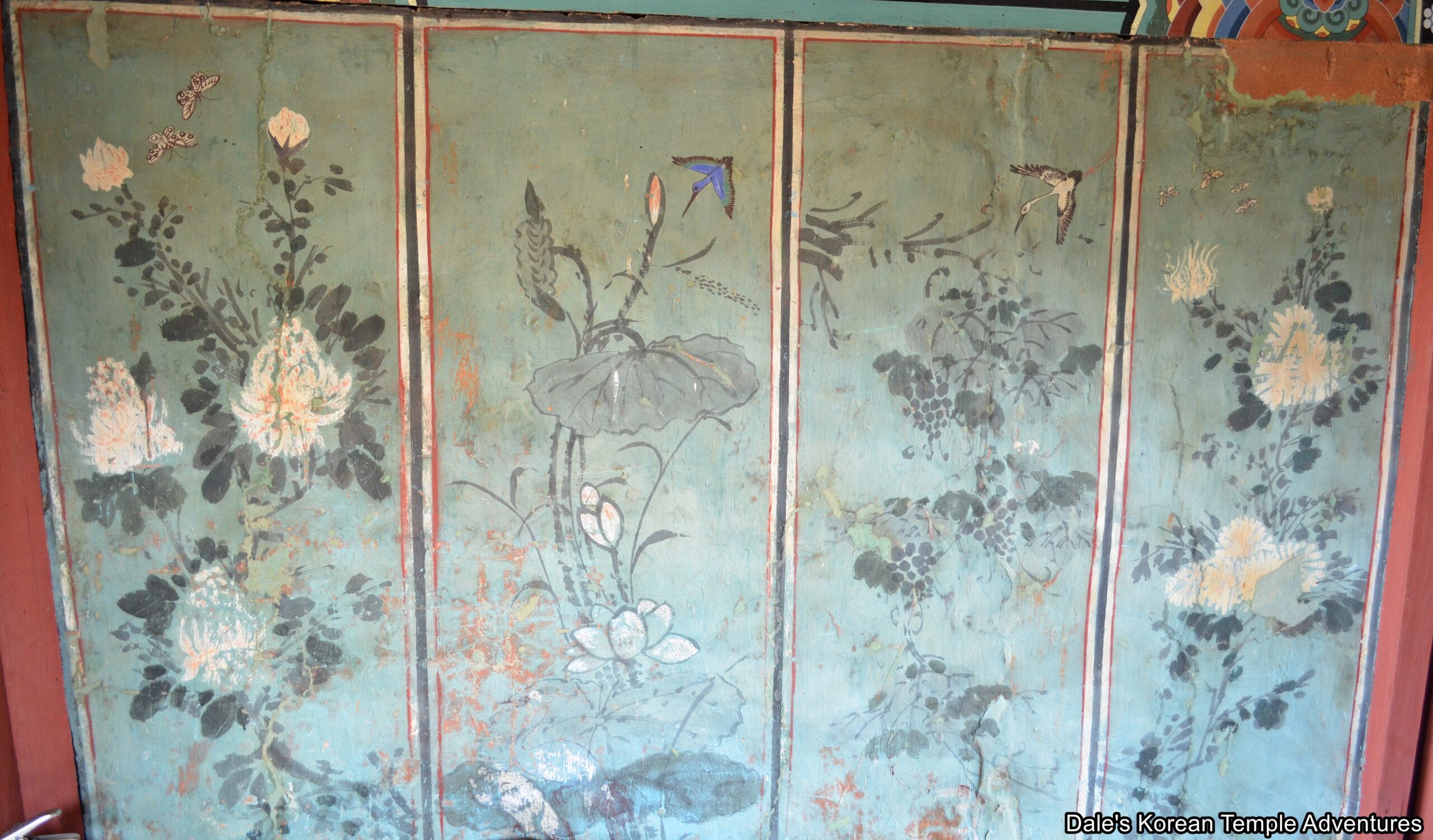
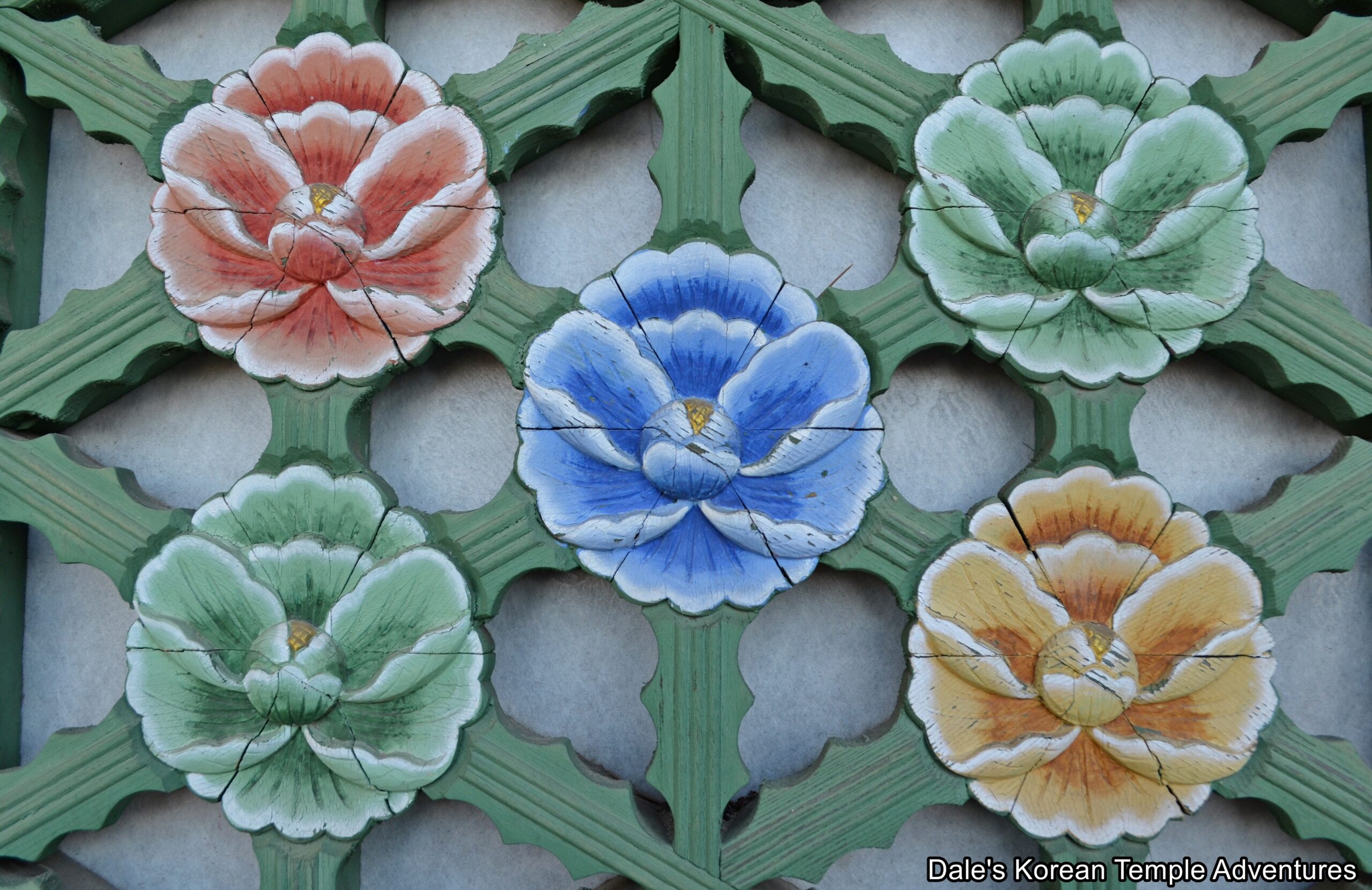
Moved by Seol Chong’s beautiful writing and wise words, King Sinmun of Silla ordered that the story be included in historical records to serve as a lesson for the future rulers of Silla. The story would also win Seol’s friendship with the king. Seol would attain high governmental positions, while also leading the study of Silla’s culture and heritage. Seol would go on to write a countless amount of works on the two main belief systems in Silla: Confucianism and Buddhism.
Conclusion
The symbolism of peonies have a long history in Korean culture and Korean Buddhism. They appear in both the “Samguk Yusa” and the “Samguk Sagi” as tales of loyalty and betrayal. These tales would help found famed temples, while also tempering the rule of future royalty and Silla society. Not only is the peony beautiful, but it’s also represents prosperity, beauty, good fortune, and loyalty in both Korean culture and Korean Buddhism. So the next time you’re at a Korean Buddhist temple, have a look around for this beautiful flower.
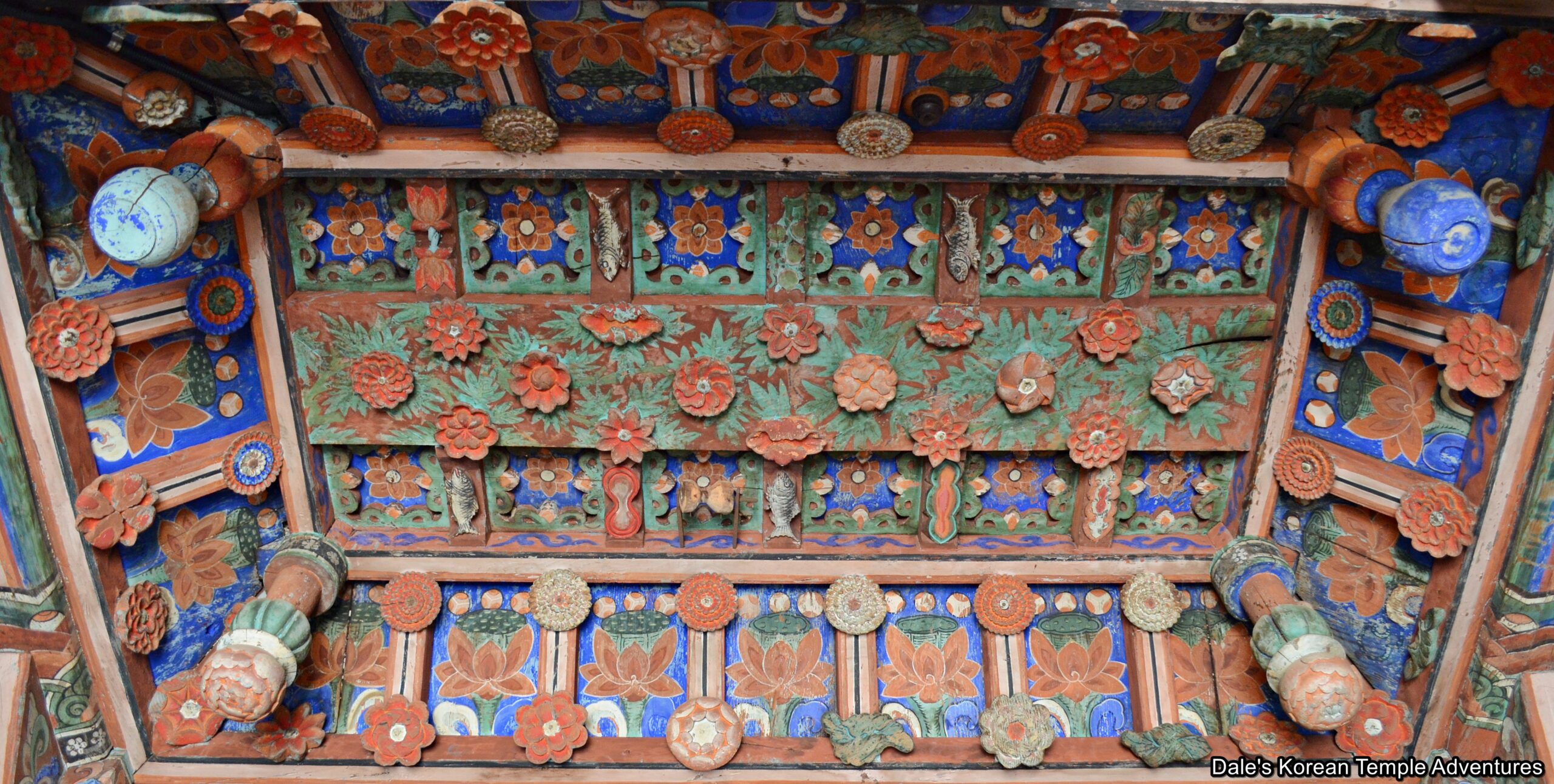


Recent comments